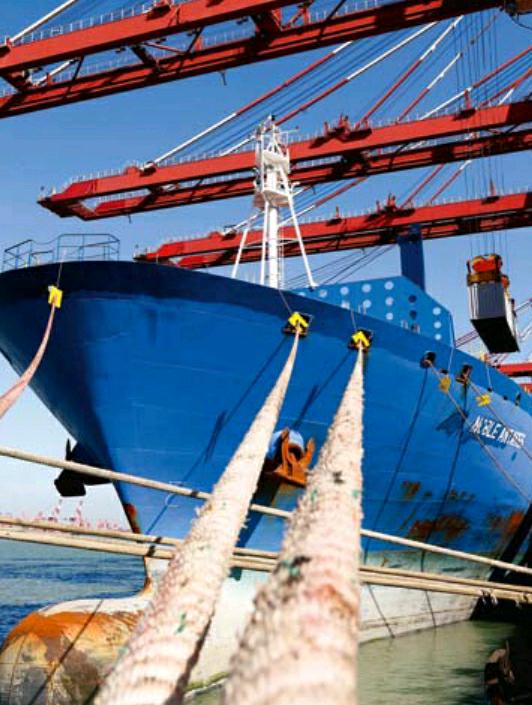China’s Prescription for Global Governance
by+Wang+Wen
The 13th FYP communiqué reveals that emphasis in the Plan is on the rate of economic growth from 2016 to 2020. This was highlighted by two principal themes: quality-oriented growth, which includes innovation, coordination, green, opening, and sharing; and improvement of peoples livelihood, which covers education, medical treatment, and social security.
“Not only has the 13th FYP drawn a blueprint for Chinas social and economic development in the coming five years,” asserts Wang Wen, executive director of Chongyang Financial Research Institute under Renmin University of China, “but more importantly, it has written a ‘prescription for the whole world with Chinese governance ideas, development concepts and measures to put them into practice.”
Today, China has attracted greater global attention for its ideas on accelerating development and growth. Take the G20 Leaders Communiqué agreed in Antalya, which is considered an interna- tional version of the 13th FYP. It is a consensus on global economic growth strategy among leaders representing 90 percent of the global trade, 80 percent of the global economy, 70 percent of the worlds population, and around 60 percent of the worlds territories. The consensus is consistent with Chinas theme of development highlighted by green, openness, and inclusiveness. It also coincides, to a large extent, with Chinas way of taking measures, including long-term planning and innovation. Ideologically, this is the greatest contribution China has ever made to global governance.
If China, as one of the G20s troika, contributed only small elements in Turkey, when it hosts the next G20 summit in 2016, it will begin to design and drive global economic growth with more Chinese ideas.
Over the last few years, some regional powers like Iran, Turkey, and South Africa have followed the Chinese formula, such as establishing special economic zones, mapping out mid- and long-term plan goals, encouraging opening-up, introducing foreign investment, and accelerating domestic economic and social policies for a sustainable reform.
This explains why leaders from 20 states realized the importance of learning from the Chinese experience when discussing development; and, why President Xi Jinping was confident enough to modestly present his “prescription” for world governance at the G20 Summit in Antalya.
There are four parts to the Chinese “prescription,” which is at the core of the 13th FYP and matches well with international practices, as followed:
Firstly, the emphasis on international coordination and communication.
At present, Chinese leaders are more frequently visiting other countries and are more involved with multilateral mechanisms. This is evident in Chinas participation in G20, BRICS, and APEC, among others; creating a network of free trade zones across the globe; signing 14 free-trade agreements with 22 countries; combating the U.S. financial crisis; providing relief to mitigate the crisis in the Eurozone; and, founding the Asian Infrastructure Investment Bank (AIIB), which has attracted over 50 countries to join hands to fill the infrastructure gap in the Asian-Pacific. Chinas contribution shows the world the vigor and vitality of a big country with a great sense of responsibility and has raised hope.
Secondly, setting up a global system for innovation.
It is one of the distinct features of the present Chinese leadership. The government has spared no efforts in encouraging investment by all enterprises and individuals, while clarifying issues of intellectual property protection. It has also pushed for establishing new business models to apply new technology for hastening technological transformation. Such innovative efforts have injected new force into the sustainable economic growth across the world.
Thirdly, shaping an open economy.
Right now, China leads the world in trade volume and ranks second in economic aggregate. For the first time in history, 2014 saw China emerging as a world leader in utilizing foreign investment. The same year, it was placed third in foreign direct investment (US$123.12 billion). As forecast, by 2020, China might turn out to be the worlds largest economy; and its import-export ratio and two-way capital flow will be larger.
China is speeding up the initiative of the Silk Road Economic Belt and the 21st-Century Maritime Silk Road (Belt and Road). The purpose is: to share achievements with the international community after strengthening national power; to establish and enhance partnership through interconnection and communication with the countries along the Belt and Road; to promote the free flow of economic impulses; to arrange resources more efficiently; to help deepen market integration; to intensify productivity cooperation among countries along the Belt and Road; to actualize coordination of economic policies; to accelerate, expand, and deepen regional cooperation at a higher level; and, to build a regional economic cooperation framework that is open, inclusive, balanced, and beneficial for all. In tune with world trends, they are the key to Chinas economic growth.
Finally, focusing on implementation of plans.
Action always speaks louder. The timely and efficient execution of plans should serve as the basic methodology for governance. In recent years, China has set an example with regards to climate change, economic growth, poverty relief, and social stability.
At present, our planet is plagued by non-traditional security issues, which are threatening the world order and mankinds survival. As a matter of fact, regardless of where we are, what we believe in, and whether we are willing or not, we constitute a community with a common future.
The 13th FYP will take effect in 2016 – probably a milestone year for global governance. Its just a beginning for China to provide“prescriptions” for the world to think in a subversive way.
China Pictorial2015年12期
